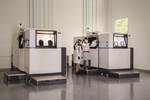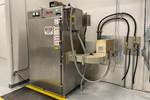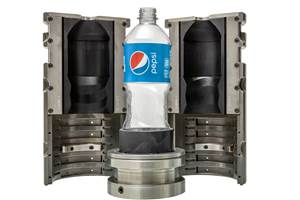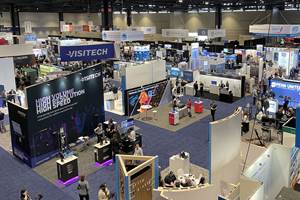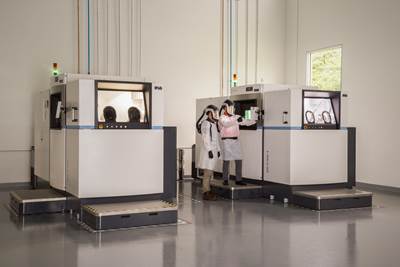Sustainability in Manufacturing Is Footprint and Handprint — and Additive Aids Both
The scope of AM’s impact changes the terms of the argument around resource re-use and conservation.
I heard a speaker at an industry conference remark that manufacturing’s gains in sustainability can be measured in both manufacturing’s footprint and its handprint. I wish I had noted the speaker’s name. That framing has remained with me, and it helps me more fully appreciate what additive manufacturing is achieving, and why its advance is important.
Additive manufacturing changes the conversation and the analysis when it comes to manufacturing more sustainably, because AM can remove the cost premium of this priority. Questions of what efforts are warranted in areas such as conservation, recycling and waste reduction no longer have to be abstract or politicized, or focused so centrally on image. With AM, the simple, frugal, responsible considerations of minimizing resource use and stewarding the impact of production can often be met as secondary effects of just pursuing the efficiencies and freedoms AM provides.
Efficiencies and freedoms. This gets to the distinction between the footprint and handprint of manufacturing. “Footprint” is where manufacturing stands, what lasting imprint it makes. The “handprint,” meanwhile, speaks to manufacturing’s reach, what it enables others to do. AM is delivering in both areas, as various recent articles describe.

The resource footprint of a product extends through the consumer's use of it. Thanks to AM, Hilos realized a shoe design making it easy to reclaim material at the end of the shoe's life.
In terms of manufacturing’s sustainability footprint, one of the more striking examples of AM’s positive effect relates to, well, footwear. Waste in manufacturing is a problem not just at the plant, but also for the consumer who has to think about disposal — the footprint extends this far. Through 3D printing, shoe maker Hilos realized a shoe design that liberates the wearer from this concern. The 3D printed design makes it easy and economical for the shoe maker itself to see to the shoe’s recycling at the end of its life.
Compare this to the promise 6K Additive is pursuing. The application and the scale could not be more different, but the closed loop is much the same: 6K is developing a system for reclaiming and reusing industrial metals, including end-of-life metal components.
And then there is the handprint. These questions about sustainability, including how much and whether to conserve, and what effort to make: They extend well beyond manufacturing. They extend as well to design engineers and inventors, and the possibilities these innovators make available to you and me. In these areas, too, AM is lending a hand.
For examples, look to the following stories of AM’s sustainability handprint. AM promises better-performing and more resource-efficient choices when it comes to electric cars, airflow systems and the façades of buildings. Just those few examples together give a sense of awe at the range of possibility. Additive can do all this!
One other recent article about sustainability focuses on Sintavia. This company’s attention to the waste streams of AM is clearly a matter of footprint. But the products of this company, the parts it makes through AM, enable planes to fly and spacecraft to launch with less weight and less manufacturing assembly. This is the sustainability handprint reaching, in a literal sense, as far and as high as it might go. Sintavia’s example illustrates a fundamental point: Handprint and footprint go together. The conversation around sustainability in manufacturing has changed, the sense of what is possible and practical has changed, because of the breadth of new possibilities — from one extremity to another — that additive manufacturing brings to the discussion.
Related Content
Multimodal Powders Bring Uniform Layers, Downstream Benefits for Metal Additive Manufacturing
A blend of particle sizes is the key to Uniformity Labs’ powders for 3D printing. The multimodal materials make greater use of the output from gas atomization while bringing productivity advantages to laser powder bed fusion and, increasingly, binder jetting.
Read MoreHow Hybrid Tooling — Part 3D Printed, Part Metal Shell — Accelerates Product Development and Sustainability for PepsiCo
The consumer products giant used to wait weeks and spend thousands on each iteration of a prototype blow mold. Now, new blow molds are available in days and cost just a few hundred dollars.
Read MoreAdditive Wins on Cost, Plus Process Monitoring and More from RAPID + TCT 2023: AM Radio #38
Additive manufacturing is finding success as a cost-effective manufacturing method. New options for process monitoring are now available. DED is getting more precise. 3D printed chairs! What we learned and observed at RAPID + TCT 2023.
Read MoreCopper, New Metal Printing Processes, Upgrades Based on Software and More from Formnext 2023: AM Radio #46
Formnext 2023 showed that additive manufacturing may be maturing, but it is certainly not stagnant. In this episode, we dive into observations around technology enhancements, new processes and materials, robots, sustainability and more trends from the show.
Read MoreRead Next
Custom Heels Are a Step Up for Circular Fashion, Sustainable Manufacturing
Custom shoe company Hilos demonstrates how, with additive manufacturing, relative outsiders can not only launch a product, but implement a new production mindset into an established industry. The company is bringing comfort and customization to fashion footwear with sustainable, on-demand production based on 3D printing.
Read MoreScaling Production at Sintavia Reveals Sustainability Challenges with AM
Additive manufacturing has not yet fully confronted all the factors that contribute to sustainability. Sintavia is discovering and working through these issues in metal AM as its production work scales.
Read MoreGetting to a Circular Model for Metal Powders Makes AM More Sustainable
6K’s UniMelt process offers efficiency and control in the production of metal powders for additive manufacturing. But more than that, it is a home for unused and oversized powder, metal scrap and more that can close the loop on metals.
Read More


